Geography, age and sex – what’s the cattle market impact?
Key points
- The market for young cattle has dropped more than 4.5% this week.
- Since the beginning of October, the Online Cattle Indicator has fallen 5%.
- The difference between the heavy steer and processor cow indicators is beginning to close.
The Eastern Young Cattle Indicator (EYCI) fell more than 4.5% this week. It dropped from 871¢/kg liveweight (lwt) to 832¢/kg lwt. The fall was most obvious in prices processors were paying for young cattle − on average 773¢/kg lwt and a 6% reduction on week ago prices. This indicates processors prefer heavier and older animals – allowing them to harvest more meat per animal.
However, the price paid for young cattle was not consistent across Australia. In southern Australia where dry conditions have impacted supply, young cattle were still able to fetch prices over $9/kg lwt. This was highlighted in Ballarat were the local EYCI contribution measured 922¢/kg lwt.
EYCI-eligible cattle in Queensland locations such as Warwick, Roma and Dalby, were reducing the EYCI due to greater throughput and cattle availability. Warwick, Roma and Dalby had the third, fourth and fifth lowest prices for EYCI cattle this week.
The Online Young Cattle Indicator (OYCI) is a great barometer of restocker sentiment. It tracks the price paid for animals offered online. Since the beginning of October, the OYCI has fallen 5.5% or 27¢/kg lwt. The biggest fall was seen in heifer prices as the rebuild reaches maturity and traders prefer steers to fatten for the finished market. Online weaner heifer prices fell 72¢/kg or 15%, reinforcing restockers’ preference for males.
Vendors using online platforms can sell animals to buyers across the country, reducing the influence of geography on the online indicators’ performance. The fall in restocker prices online can be attributed to the changing BOM outlook, tougher than expected spring conditions in some areas and caution about the ‘wet’.
Since mid-September trends between the heavy steer and processor cow prices have seen shifts. Heavy steer prices have trended higher, including a 12-month peak at 438¢/kg, while over the last three weeks, the processor cow prices have fallen 7%. The processor cow prices reduction has occurred with the passing of the United States (US) summer and grilling season. Heavy steer prices remained strong due to strong processor demand to maximise kilos of beef per animal. The trend for higher heavy steer prices ended this week as the indicator fell 2% and is now showing signs of returning to align with processor cow prices − a trend that had been consistent since October 2024.
Information is correct at time of publishing on 10 October 2025
Attribute content to: Stephen Bignell, MLA Manager – Market Information



